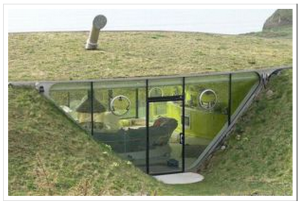Susan is seventy years old. She is retired but leads an active life and is always busy. She likes to travel in the UK and overseas and wants to organise her travels independently. Her failing eyesight is an issue, which makes it difficult for her to access websites to read all of the travel sites, but she knows that to get the bargains she needs to go online.
Peter is sixty-five years old and is recently widowed. He is having problems with his hearing and his knees. So, he needs to receive travel information in a way that is accessible for him, and be able to get around without hurting himself. But, he is very keen to complete his travel bucket list, and visit all the places he has wanted to see with his son, Jim.
There are lots of people like Susan and Peter. AgeUK estimates that there are over 23.2 million people aged 50 years and over in the country. They have been coined the “new jet setters”, spending more on travel than the millennials. And because of people like Susan and John, I was here at Aging 2.0’s hackathon in London’s Google Campus in London to make travel easier for these over fifties.
The organisation – Aging 2.0 – is on a mission to accelerate innovation for people like Peter and Susan through its global innovation platform for ageing and senior care. This hackathon was just a part of it, with a unique twist: intergenerational collaboration. Senior advisors — the over fifties who travel – were paired up with younger, and not so younger, developers, designers and business people to create tech travel solutions. Over twenty-four hours, numerous ideas were pitched, teams were formed, and apps, websites and hardware concepts were created.
With the support of the advisors, we were able to delve deep into the problems that the over fifties face when they travel. From the poor website user interfaces with tiny fonts and text heavy descriptions, which I myself find off putting. To the issues surrounding mobility and health such as being able to navigate historical sites with lots of steps, and getting the right medical attention at the right time in a foreign country.
Muir Gray “Edutaining” the crowd
This inter-generational pairing really helped my team whittle down our ideas from three ideas that all met a clear need to one, which did a bit more. This one idea could be built in the time given, had no competitors (as far as we know), and did not require heavy investment in logistics. Anyone who has done a few hackathons can testify that going for a simple idea and being able to build quickly is the key.
However, as usual, we were fighting against the clock. The last few bugs were resolved a minute before the pitch. Even though our business case was tight, memorising the case studies and the user journey was done just in the nick of time.
Frantic race to the finish – almost stressed out of our minds
My team was fourth to pitch with Avita. A big-data driven travel advice solution for the user by people like the user using Sabre APIs. All I can say is that it is interactive with a focus on making the information easy to navigate and easy to understand.
After a nail biting judging , the winners were announced. A well deserved third place went to Speedr – a medical alert system with graded responses according to severity of the medical condition; and second to an indoor navigational system to help the elderly find the toilet with a slick user interface. I did not really hear who the winners were until I got a nudge in the ribs to tell me that – Yes – it was Avita, so we will be heading to the Aging 2.0 Expo in November.
The other ideas pitched included Mabel, a digital helper so the elderly avoid inaccessible places, which was trending on Twitter all weekend; an app to address the issue of social isolation and the crowd favourite – EarBuddy – a smart phone-linked solution that cuts out background noise and gives clear navigation and alert information to travellers.
Team pitching EarBuddy
All in all nine teams were formed; more than nine great ideas were proposed; and nine tech solutions were pitched to help the over fifties travel ‘agelessly’. But something even more than that was formed at this hack. Friendships were formed between the senior advisors and the “younger” techies that will help ensure that innovation solutions will continue beyond the hackathon and into the future.
What is a hackathon?
Well, hackathon is not yet in the dictionary but I am sure it will be soon. According to Wired, “a hackathon (also known as a hack day, hackfest or codefest) is an event in which computer programmers and others involved in software development and hardware development, including graphic designers, interface designers and project managers, collaborate intensively on software projects.” (http://goo.gl/vZsQSZ)
Number of stickers on a laptop correlates to the number of hackathons attended – there is always room for more stickers! There is no such things as “peak sticker!”
Sources: AgeUK – http://goo.gl/0oTnl; Express Newspaper – http://goo.gl/u2d6RK













